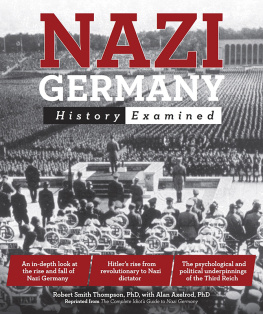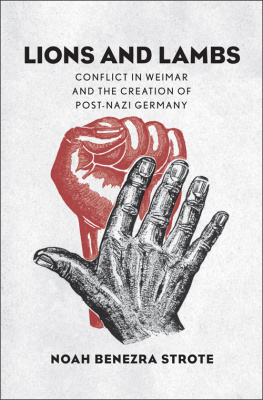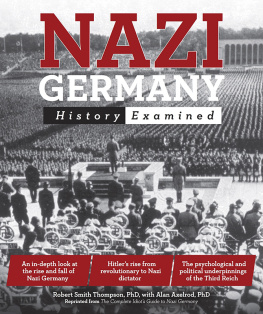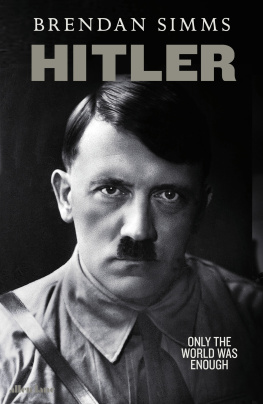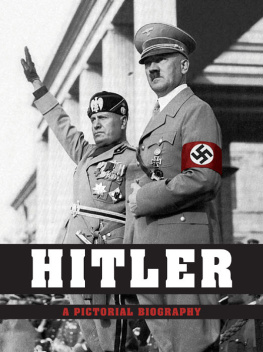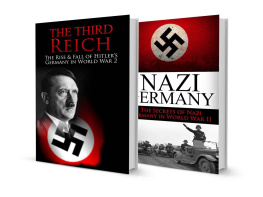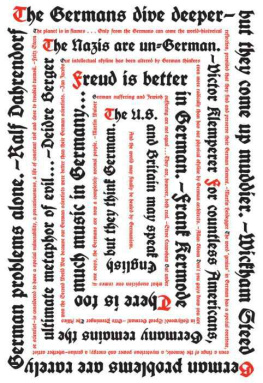A DEFINITIVE GUIDE TO WORLD WAR II
CONTENTS
INTRODUCTION
THE TREATY OF VERSAILLES
RISE OF THE NAZIS
NAZI GERMANY
APPEASING THE BEAST
INVASION OF POLAND
THE BATTLE OF FRANCE
THE BATTLE OF BRITAIN
OPERATION BARBAROSSA
JAPANESE ATTACKS ON PEARL HARBOR
THE HOLOCAUST BEGINS
CASE BLUE AND THE BATTLE OF STALINGRAD
THE BATTLE FOR CONTROL OF THE SEAS
ALLIE SUCCESS IN AFRICA AND THE FALL OF FASCIST ITALY
1944- THE ALLIES CLOSE IN ON VICTORY
END GAME
A STUBBORN ENEMY
THE NEW WORLD
INTRODUCTION
World War II shook the world unlike any other conflict which came before it, and changed the course of human history forever. While recorded human history began five thousand years ago, six particular years of the 20th century have been studied and debated more than any other period.
For six years and a single day, more than one hundred million people from all regions of the world, were in some way engaged in the conflict. The final death toll is still unclear, but it is estimated that over sixty million human beings lost their lives. To put that into perspective, 3% of the global population at that time perished.
The impact of the conflict on modern day life can not be overstated. The world was changed forever once hostilities had ended. For example, the creation of both the United Nations (UN) and the Israeli state are both products of the war. The use of nuclear weapons to finally end the war outright, and the resulting status of the USA and the Soviet Union as the worlds superpowers, led to the Cold War which only ended with the collapse of the Soviet Union in 1991. During the years of the Cold War, there were moments where it seemed a real possibility mankind was on the brink of self-annihilation via nuclear war. The very invention of nuclear weapons can be directly attributed to World War II, as each side looked for a device which would swing the tide of the conflict in their favour.
While World War II provided many horrors for future generations to be shocked by, the Holocaust in particular has disgusted and perplexed the world beyond comprehension. When the concentration camps were liberated at the end of the war, the true evil at the core of the Nazi movement was exposed for the world to see. The resulting Nuremberg Trials went some way towards bringing justice for the victims, but as the Holocaust required the participation of tens of thousands of people, the majority of those involved escaped punishment.
THE TREATY OF VERSAILLES
The Second World War took place not so much because no one won the First World War, but rather because the Treaty of Versailles failed to recognise this fact.
WWII historian Paul Johnson

While World War II changed the world forever, the same can be said of World War I. First and foremost, it was during World War I where the distinction between soldiers and civilians became blurred for the first time, as they would again during World War II. The general populations of each nation fighting were heavily involved in the war effort. Due to the Industrial Revolution, armaments were produced not just in greater abundance, but also at a much quicker rate. In order to produce these weapons, civilians were employed in mass numbers on both sides to help with the war effort. In Britain for example, the contribution of women during this time is seen as a defining reason for women being granted the right to vote in 1918.
While military technology had increased exponentially post-Industrial Revolution, military tactics had not. World War I has become almost synonymous with trench warfare, and in particular the graphic descriptions of life in these trenches by soldiers who fought in them. Trench warfare essentially involved both sides facing each other in trenches, while contesting the so-called no mans land in between. Eventually at some point, one of the belligerents is forced to charge at the enemys trench, if they are to gain ground. Prior to World War 1, the best defence to an assault on ones trench was the use of a Gatling gun, which was one of the first developed rapid-fire guns. By the time World War I came around, the Gatling gun had been improved and modified drastically. The result was that the amount of deaths and injuries sustained by a charge upon an enemys trench was enormous. Whereas before it would take a platoon of troops to fire perhaps one hundred rounds in a minute, only two soldiers could release hundreds more in the same amount of time. The result was World War I becoming the most brutal conflict in history, only surpassed by the world war which would follow it. Approximately 10% of all soldiers who fought in the Great War, lost their lives.
The scale of the death and destruction took both sides by surprise. When hostilities ended on 11th November, 1918, there was much animosity on the part of the victors.
The main leaders of the victorious Allied nations squarely put the blame for the conflict on Germany. The argument of the Allied leaders was that Germany could have stopped the conflict, had they not supported and engaged in the Austro-Hungarian invasion of Serbia.
When Woodrow Wilson (American President), David Lloyd George (British Prime Minister) and Georges Clemenceau (French Prime Minister) convened in order to decide what should be done with Germany, they had differing views.
Privately Lloyd George was more worried about the possible rise of communism in europe, than he was about the possibility of a resurgent Germany starting another war. He believed that a strong Germany would be necessary to halt the spread of communism outside of Russia, and was concerned that the German people might turn to communism themselves if the Allies were too hard on Germany.
Publicly however, Lloyd George could never have expressed this viewpoint. The British public wanted to see the German nation punished for the war, and the idea the Allies should take a somewhat soft approach would have been political suicide for Lloyd George.
Woodrow Wilson had been horrified by the scale of the devastation and the human loss caused by the war. The American people were equally dismayed, and there existed a growing consensus among the American public that Europe should be left to its own fate in future.
Georges Clemenceau of France had the most extreme beliefs of all. He wanted to see the German nation brought to her knees economically, politically and socially so that never again could she start a war of such devastation. Ironically, Clemenceau was voted out of office soon after as he was seen as not holding tough enough views on this matter.
The main Allied leaders eventual signed the Treaty of Versailles, signed on 28 June, 1919. The main consequences of the treaty were as follows:
- certain territories seized and given to France, Belgium, Denmark, Czechoslovakia and Poland respectively.
- the size of the German army was capped at 100,000 men. The army was also banned from maintaining tanks (which became a crucial instrument of war following the losses sustained during trench assaults in the war)
- the German navy was not allowed to maintain submarines of any kind
- the German defence forces were not allowed to raise an air force of any kind
- the German and Austrian states were barred from joining together to form one single political entity
- Germany had to admit to full responsibility for the war
- Germany had to pay war reparations to Allied nations, in particular France and Belgium
German political leaders had no choice but to sign the treaty, as the Allies made it clear they would invade the country and run it themselves from within.
Next page


